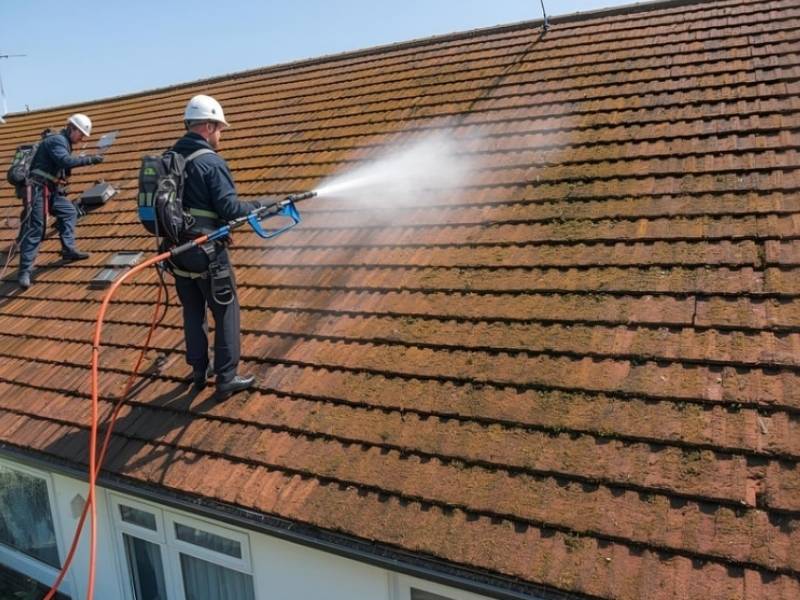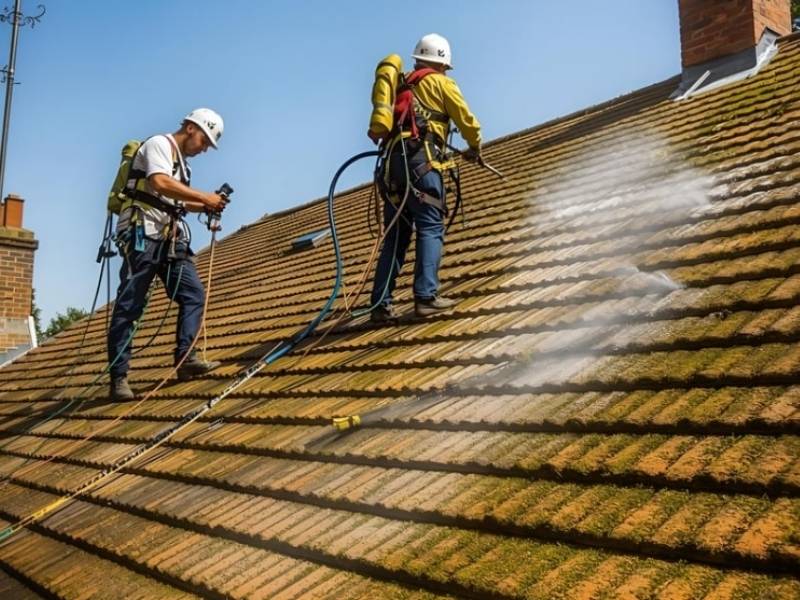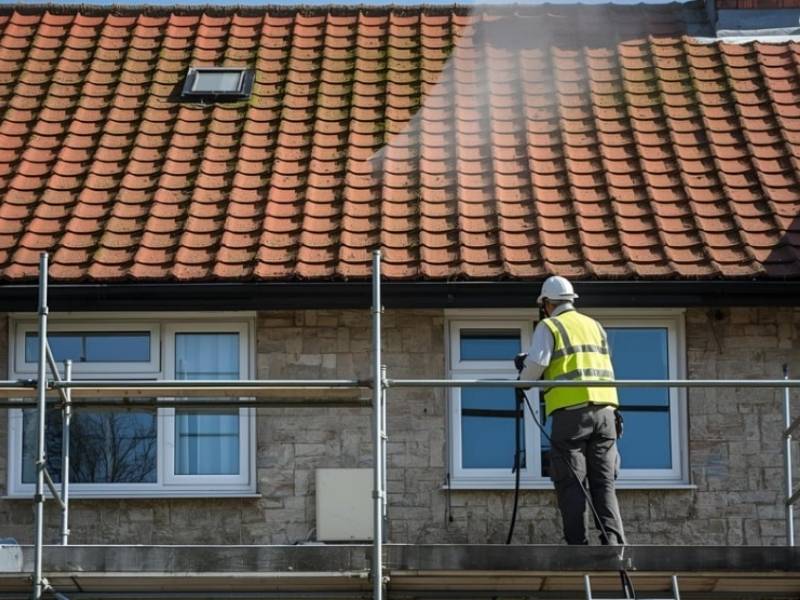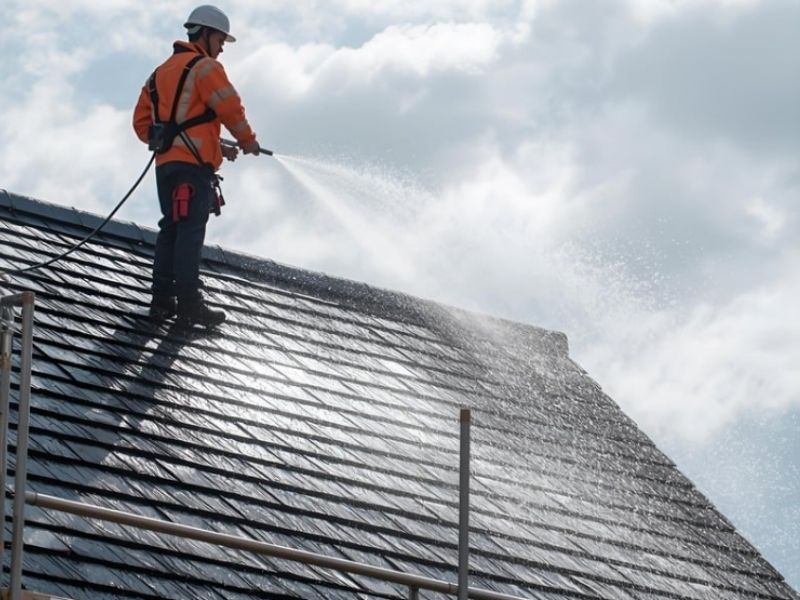
Moss on your roof isn't just unsightly. Left unchecked, it can lead to significant issues that compromise your home's structural integrity and increase repair costs. At Roof Cleaning Newcastle, we help both domestic and commercial property owners understand when to tackle this problem for the best results.
The season you choose for cleaning makes a real difference to how effective the treatment will be and how long your roof stays moss-free. Poor timing can mean wasted money, reduced treatment effectiveness, and a faster return of growth. For homeowners wondering how to stop moss growing on your roof, choosing the right season is one of the most important factors.
Weather conditions directly affect both the safety of the work and how well cleaning solutions perform. Spring and early autumn stand out as the ideal time for professional roof cleaners to carry out this essential maintenance task.
March through May represents the peak period for roof cleaning in the UK. Around 60% of all moss removal work happens during these months. There are solid reasons why many homeowners schedule treatment at this time.
The mild weather creates perfect working conditions. Temperatures are warm enough for biocide treatments to work effectively, but not so hot that cleaning solutions evaporate before they can do their job. Moss that has accumulated over the damp winter months is easier to remove during this period.
After removing moss in spring, any treatment applied remains active through the wetter summer months. This helps prevent regrowth for four to six years when done properly. You're essentially giving your roof protection right before the season when moisture levels could encourage new growth.
Safety is another factor. Spring weather means crews can work without the risks that come with icy winter conditions or the intense heat of summer. The longer daylight hours also allow for more thorough work to be completed in a single visit.

September and October offer another excellent opportunity for roof moss removal. This timing allows you to prepare your property before winter arrives, when heavy rain and frost can worsen any existing damage.
Cleaning before winter prevents moss from becoming more deeply embedded during the cold, wet months. The mild autumn temperatures mean treatments work effectively, and there's enough time for them to take hold before winter weather sets in.
Properties with north-facing or heavily shaded roofs benefit particularly from autumn cleaning. These areas tend to stay damp longer and can show signs of regrowth within two years if not maintained at the right time.
While summer months can work for moss removal, strong sunlight and high temperatures create challenges. Cleaning solutions may evaporate too quickly, reducing their effectiveness. The heat also makes roof work more physically demanding for crews.
If you need to schedule cleaning during summer, aim for cooler days or times when your roof is in shade. Professional teams adjust their approach based on conditions, but spring or autumn will generally deliver better long-term results.
Late summer can offer one advantage: lower demand sometimes means reduced costs. Homeowners who book during off-peak months may save five to ten percent compared to spring prices.
Winter is the least suitable time for roof cleaning. Icy, slippery tiles create serious safety hazards for workers. Safety harnesses and proper equipment become even more critical, but the risks remain high.
Shorter daylight hours limit how much work can be completed. Cold temperatures also mean some treatments won't work properly or take much longer to become effective. The wet conditions that define British winters make it nearly impossible to achieve the dry surface needed for optimal treatment.
Most professional roof cleaners won't take on winter work unless absolutely necessary, and for good reason. The combination of safety risks and poor treatment conditions makes it an impractical choice for most properties.
Understanding what moss does to roofing materials helps explain why timely removal matters. Moss grows by pushing its roots under tiles and shingles, lifting them slightly. This creates gaps where water can penetrate, which is why many homeowners search for advice on how to clean roof moss effectively.
Over time, this moisture leads to damaged tiles, rotting underlayment, and water damage inside your property. The weight of moss also adds strain to your roof's structure, particularly when saturated with rain. In wet climates like the North East, these problems develop faster.
Regular maintenance can extend your roof's lifespan by five to fifteen years. This prevents the need for premature replacement, which costs substantially more than periodic cleaning.

Business owners face additional pressures when it comes to roof maintenance. A moss-covered commercial building affects curb appeal and can create negative impressions with clients. The job of protecting your investment includes scheduling regular cleaning at the best time.
Commercial properties often have larger roof areas and more complex structures. This means the cleaning process takes longer and requires more planning. Spring scheduling helps ensure the work is completed before your busy summer season begins.
Different parts of the UK experience varying weather patterns that affect when to schedule cleaning. Newcastle and the surrounding areas see plenty of rain throughout the year. This creates ideal conditions for moss to thrive on north-facing slopes and shaded sections.
Properties near trees face even more challenges. Overhanging branches drop debris and keep sections of your roof damp for long periods. These areas need more frequent attention than roofs with more sunlight exposure.
Understanding the cleaning process helps you prepare for the work. Professional teams start by removing loose debris from gutters and roof surfaces. They then apply specialized treatments designed to kill moss at the root level. If you’ve ever wondered what is soft wash roof cleaning, this is the stage where the method begins to stand out. Homeowners often ask what type of roof cleaning is best, and the answer depends on balancing effectiveness with protecting the roofing materials.
The soft washing method has become popular because it's gentler on roofing materials than high pressure washing. A pressure washer might seem effective, but it can damage tiles and force water under the surface. Soft washing achieves thorough cleaning without these risks.
After initial cleaning, crews apply a biocide treatment that prevents regrowth. This eco-friendly solution continues working for years when applied at the ideal time of year. Some companies also offer protective coatings that make future cleaning easier.
Regular cleaning isn't just about removing what's already there. It's about preventing moss from gaining a foothold in the first place. Many homeowners ask, does roof cleaning extend the life of a roof, and the answer becomes clear when you see that properties cleaned every three to five years typically avoid serious damage and maintain their appearance more effectively.
Roof moss can start showing noticeable regrowth within two to three years on roofs that aren't cleaned before winter. By contrast, properties maintained at the right time extend the period between treatments and reduce overall costs.
Think of spring and autumn cleaning as preventive maintenance rather than just cosmetic work. The further damage you prevent far outweighs the cost of periodic cleaning.

Sometimes you can't wait for the ideal time. Heavy moss growth, visible water damage, or blocked gutters may require immediate attention regardless of season. Look for these warning signs:
Dark streaks or green patches covering large areas of your roof signal established growth. Tiles that appear lifted or damaged need urgent assessment. Water stains on ceilings inside your property indicate moisture has already penetrated.
Many homeowners underestimate how quickly small amounts of moss spread under the right conditions. What starts as a minor issue can become a major problem within a single winter season.
The best time to remove moss from your roof arrives twice each year, but the leading choice remains spring. Don't wait until winter weather makes the job dangerous and less effective. At Roof Cleaning Newcastle, we understand the range of factors that determine the best approach for your specific property.
Whether you own a domestic home or manage commercial premises, regular maintenance protects your investment and extends the life of your roof. Get in touch with Roof Cleaning Newcastle today for a free quote. Our experienced team will assess your property and recommend the most effective timing for your roof cleaning needs.